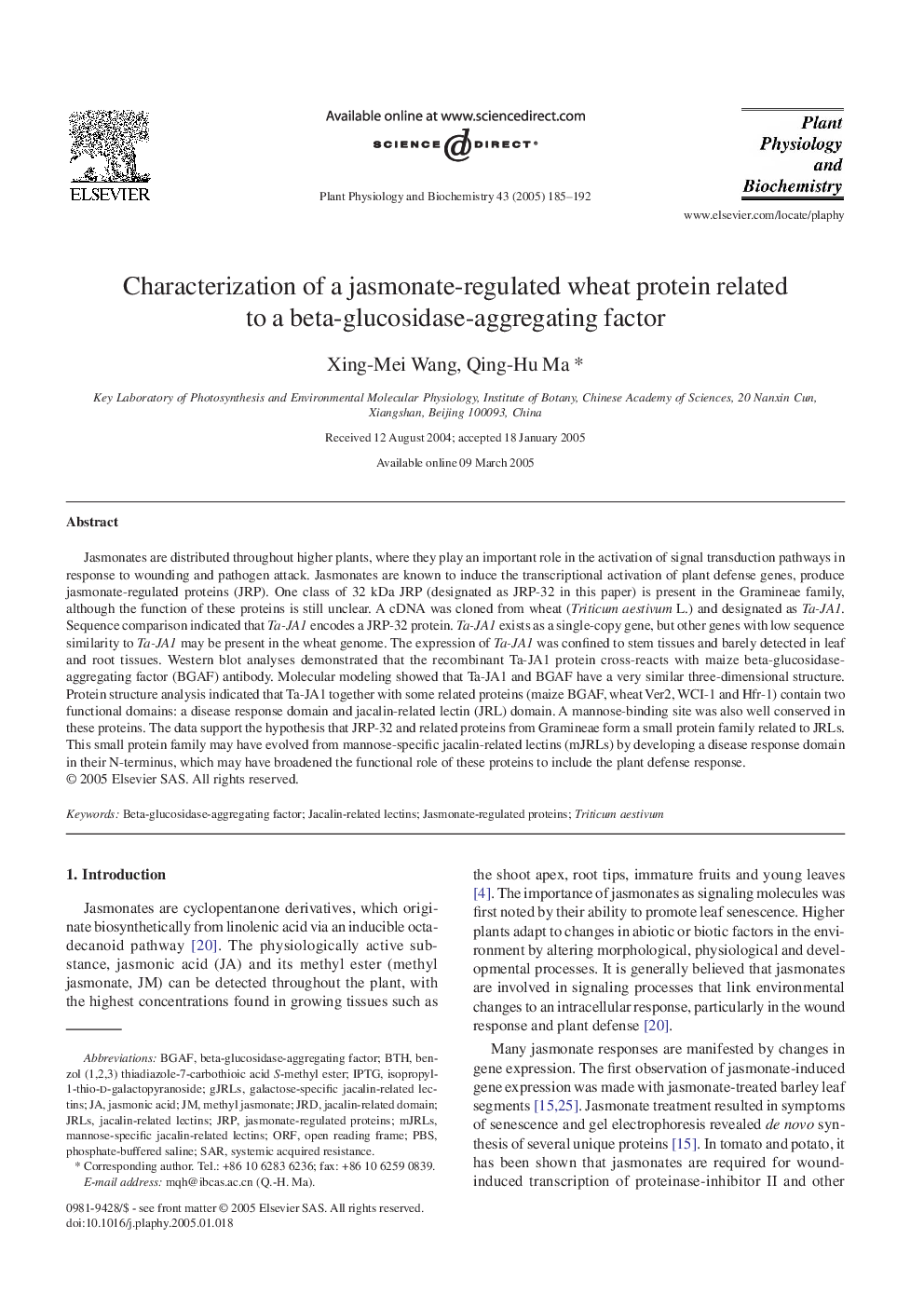| Article ID | Journal | Published Year | Pages | File Type |
|---|---|---|---|---|
| 10840455 | Plant Physiology and Biochemistry | 2005 | 8 Pages |
Abstract
Jasmonates are distributed throughout higher plants, where they play an important role in the activation of signal transduction pathways in response to wounding and pathogen attack. Jasmonates are known to induce the transcriptional activation of plant defense genes, produce jasmonate-regulated proteins (JRP). One class of 32Â kDa JRP (designated as JRP-32 in this paper) is present in the Gramineae family, although the function of these proteins is still unclear. A cDNA was cloned from wheat (Triticum aestivum L.) and designated as Ta-JA1. Sequence comparison indicated that Ta-JA1 encodes a JRP-32 protein. Ta-JA1 exists as a single-copy gene, but other genes with low sequence similarity to Ta-JA1 may be present in the wheat genome. The expression of Ta-JA1 was confined to stem tissues and barely detected in leaf and root tissues. Western blot analyses demonstrated that the recombinant Ta-JA1 protein cross-reacts with maize beta-glucosidase-aggregating factor (BGAF) antibody. Molecular modeling showed that Ta-JA1 and BGAF have a very similar three-dimensional structure. Protein structure analysis indicated that Ta-JA1 together with some related proteins (maize BGAF, wheat Ver2, WCI-1 and Hfr-1) contain two functional domains: a disease response domain and jacalin-related lectin (JRL) domain. A mannose-binding site was also well conserved in these proteins. The data support the hypothesis that JRP-32 and related proteins from Gramineae form a small protein family related to JRLs. This small protein family may have evolved from mannose-specific jacalin-related lectins (mJRLs) by developing a disease response domain in their N-terminus, which may have broadened the functional role of these proteins to include the plant defense response.
Keywords
Related Topics
Life Sciences
Agricultural and Biological Sciences
Plant Science
Authors
Xing-Mei Wang, Qing-Hu Ma,
